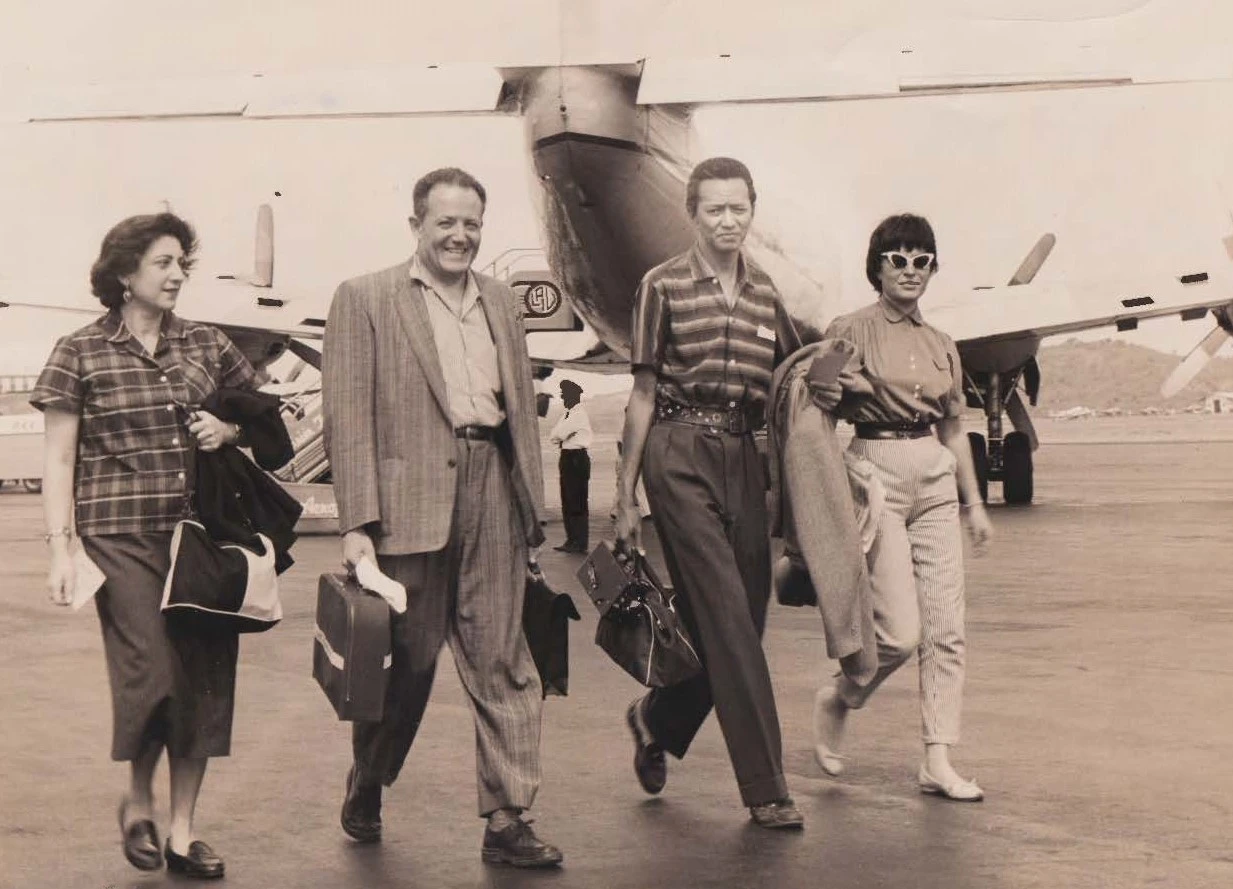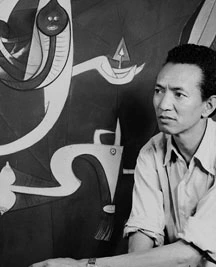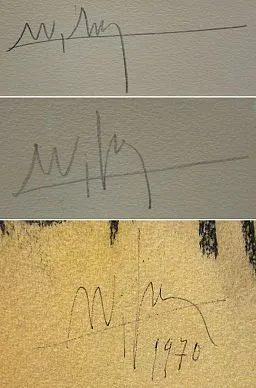Wifredo Lam
(1902-1982)

Wifredo Lam
Wifredo Oscar de la Concepcion Lam y Castilla was born and raised in Sagua La Grande, Cuba to mother Ana Serafina Castilla, of Congolese and mulatto-Cuban descent, and father Yam Lam, a Chinese immigrant. His village of Sagua LA Grande was surrounded by many people of African descent which inspired his art and desire to preserve and revitalize the Afro-Cuban spirit through his art.
At the of age 14, Lam moved to Havana to study law, this was what his parents wanted. Lam became interested in in tropical plants and from ages 16 to 21, instead. He also studied painting at the Havana Escuela de Bellas Artes. Lam disliked strict academic studies,. so he left for Madrid to study under the less-formal Fernando Alvarez de Sotomayor y Zaragoza. Zaragoza was also Salvador Dalí’s teacher.
Lam attended his teacher’s studio in the mornings and, in the evenings surrounded himself with young, nonconformist painters. At the Prado Museum Lam discovered and embraced the works of Hieronymus Bosch and Pieter Bruegel.
Lam’s early paintings were in the modernist Spanish tradition, his work evolved to become more simplistic and decorative. Lam’s time in Spain marked a significant step in his technical development.
It is possible that the death of his wife, Eva Piriz and their young son from tuberculosis in 1931, contributed to the darker development of his work.
During the 1930s, Lam was exposed to many new influences, including Surrealism and the Fauvism of Henri Matisse. Lam traveled through the Spanish countryside and developed empathy for the peasants he found there whose struggle reminded him of those of the former slaves in Cuba. Lam sided with the Republicans during the civil war and created posters and propaganda for them. He also drafted and injured during the fighting in late 1937. During his incapacitation, he was sent to Barcelona where he met artist Manolo Hugue who facilitated his introduction and friendship with Picasso.

Le peintre Wifredo Lam et Amy Bakaloff Courvoisier en 1957

Wifredo Lam et Amy B. Courvoisier à Canaïma avril 1957
In the late 1930s, Lam moved to Paris. He had a letter of introduction to Pablo Picasso, with whom he formed a life-long friendship. Picasso introduced Lamto many leading artists including Fernand Léger, Henri Matisse, Georges Braque. and Joan Miró. Picasso also introduced Lam to a Parisian art dealer who gave Lam his first exhibition in 1939, which was well received by critics. Lam also exhibited with Picasso in New York in 1939. Picasso introduced Lam to Cubism.
At the outbreak of World War II, Lam left Paris for Marseille and then, with other artists, attempted to move to Martinique. He was imprisoned and released after forty days. Lam was allowed to return to Cuba where he settled in Havana. There, Lam’s art were affected by the city’s Afro-Cuban traditions. Lam continued to simplify and synthesize abstraction within figural painting.
Lam eventually settled in Paris after dividing his time between Cuba, France, and New York. In his later years, Lam experimented with pottery and model sculptures. Lam had more than one hundred exhibits around the world and a well-established reputation at the time of his death. Lam’s synthesis of Surrealist and Cubist elements with the so-called “primitive” arts of the Americas and Afro-Cuban iconography mean Lam did not belong clearly to any one specific movement. He died in Paris on September 11, 1982 at age seventy-nine.

Pencil signatures of Cuban artist Wifredo Lam